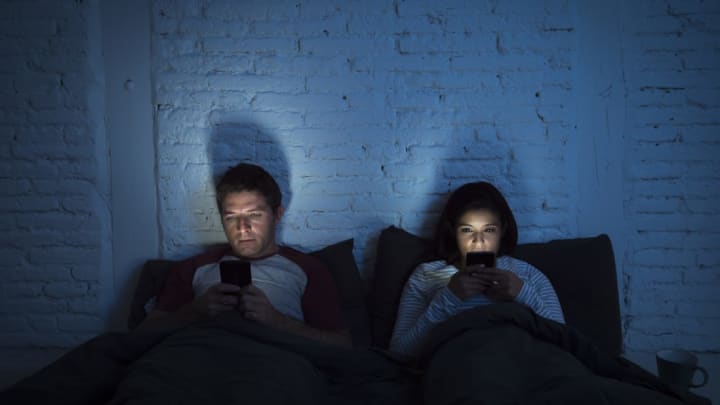In the modern era, it feels virtually impossible to live without a smartphone. How would your friend tell you she's running late to meet you for lunch? How many life updates would you miss if you're off Instagram? How on earth do you find anything without Google Maps? Few of us are able to resist the siren call of cell phones and social media, and as a result, researchers say that smartphone addition is on the rise, causing greater levels of anxiety and depression, especially among young adults.
Even if you don't feel like your phone is making you depressed, you probably feel like you stare at it at least a little longer than you should each day. According to a recent Pew Research Center survey, 46 percent of smartphone owners say they couldn't live without their device. But there are ways to detach from your precious phone without having to totally disconnect. Here are three tips to help you back off your smartphone usage, no withdrawal pains necessary.
1. TURN OFF VIBRATIONS.
Let's face it: You probably look at your phone regularly, whether you know someone is trying to reach you or not. You know, just in case. A 2015 Gallup poll found that half of all smartphone owners look at their device hourly. Checking your smartphone is essentially a compulsion for many people, one that researchers say plays on the brain's dopamine circuitry to leave us always wanting more. To short-circuit that process, take away those intrusive notifications that derail your attention even when you're not looking at your phone. Trust us, you will rarely miss an important text message by waiting a few minutes to answer it, and you'll probably get rid of those pesky phantom vibrations in the process. Does it really matter if you find out now or in an hour that you have three likes on your latest Instagram post? We didn't think so.
2. DITCH THAT BATTERY PERCENTAGE NUMBER.
Checking your phone all the time doesn't just make you stress over whether or not someone is texting you back. The more time you spend on your smartphone, the quicker your battery dies, and the more time you spend stressing out over whether or not you'll have enough battery left to keep using your phone for the rest of the day. But knowing whether your phone is at 63 percent battery or 57 percent battery probably won't help. It's hard to judge exactly how long a phone will last even when you can see the percentage, and the constant downward tick of the numbers is only going to make you obsess more. So just disable the setting, hiding the battery percentage display altogether. You'll still be able to get a rough idea of how much charge your phone has left from the icon, there just won’t be a specific number attached to it. Because when it comes to actually using your smartphone, the difference between 54 percent and 53 percent battery is essentially meaningless, anyway. You might as well just ignore it.
3. MAKE IT GRAYSCALE.
This one is a recommendation from Tristan Harris, a former "Design Ethicist" at Google. He is a specialist on just how our phones hijack our attention, and how those random notifications keep us coming back to our home screens again and again and again. To break the pattern, he suggests making your phone’s shiny graphics look a little less interesting. Make them grayscale instead of color. Suddenly, your vibrant, colorful phone will look a little more drab. You'll be able to text and make phone calls and use Google Maps, sure, but scrolling through Facebook won't feel quite as rewarding.
This one seems a little extreme when you first try it, but it's pretty easy to switch back and forth between color and grayscale when you enable the setting. For an iPhone, go to the General tab in your settings, then Accessibility > Display Accommodations > Color Filters. When you turn on color filters, you should be able to select grayscale as an option, turning your phone drab. To switch back to color occasionally, go back to the Accessibility menu in your settings, then select Accessibility Shortcuts all the way at the bottom. Enable Color Filters in that menu, and you'll be able to switch back and forth just by triple-clicking the home button.
If you have an Android, the process is a little more complicated, and you may have to enable a developer mode to unlock it. (More instructions here.)
Once your phone is robbed of color, you'll be surprised at how much less powerful the rush of opening up your home screen is. It's like taking a sip of decaf coffee.
